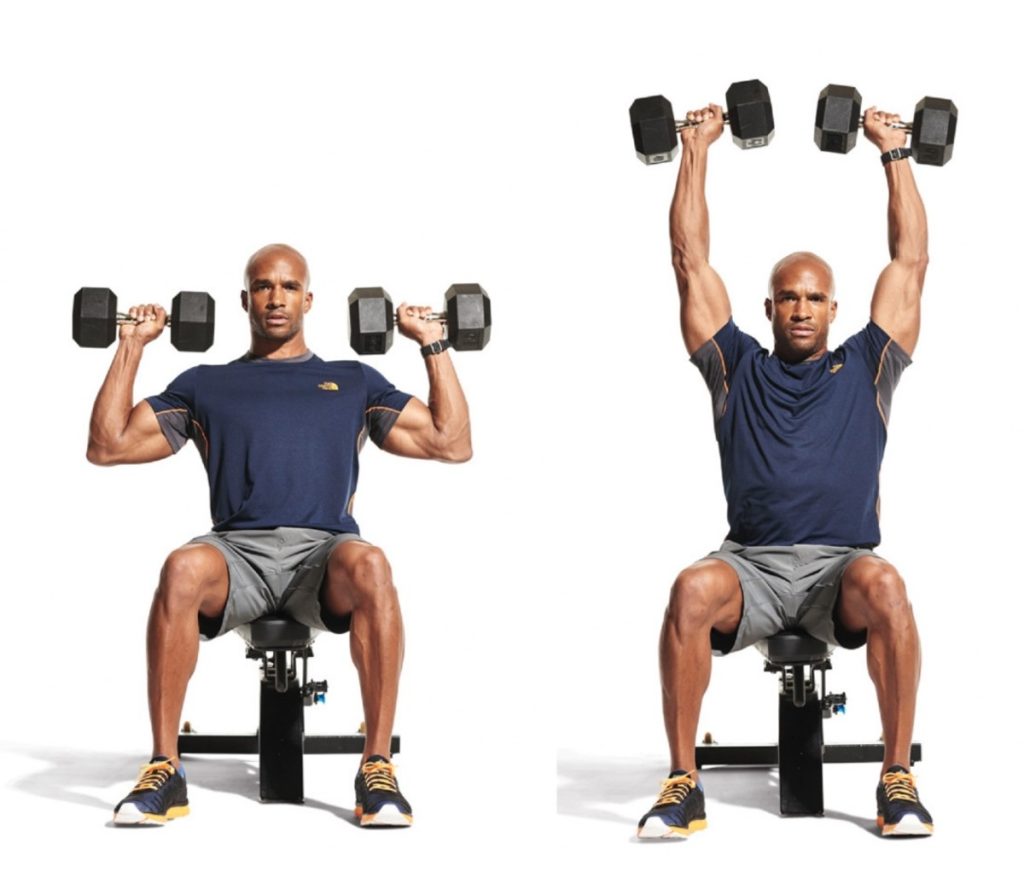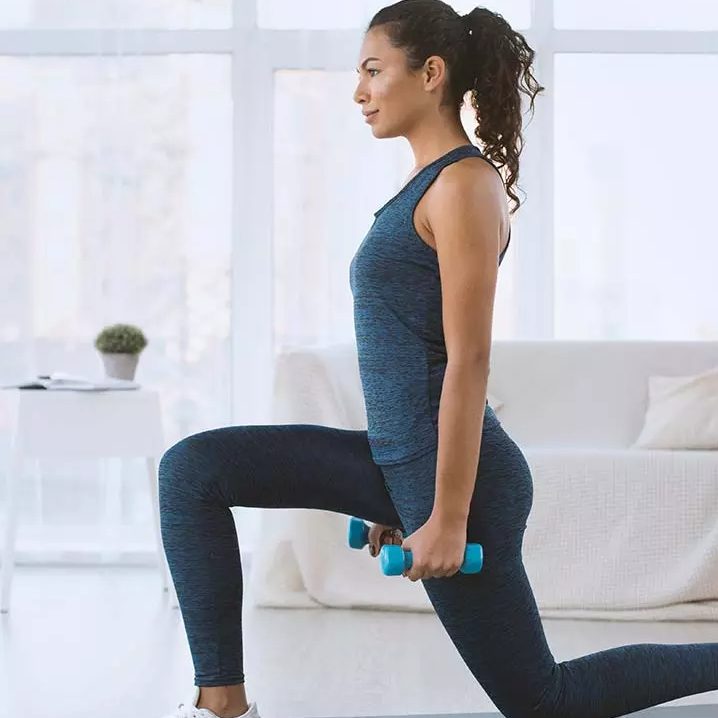Introduction: The Benefits of Dumbbell Workouts
Versatility and Convenience
Dumbbell workouts hold a unique place in the fitness world due to their unparalleled versatility and convenience. Unlike other gym equipment that may require extensive space or complex setups, dumbbells can easily be used at home or the gym with minimal space requirements. They allow for a wide array of exercises targeting different muscle groups, making them suitable for full-body workouts or specific muscle isolation. This versatility ensures that whether you’re a beginner or an advanced fitness enthusiast, dumbbells can be adapted to fit your workout regimen and goals.
Muscle Symmetry and Balance
Using dumbbells in workouts promotes muscle symmetry and balance, unlike machines that often isolate a single muscle group. Dumbbells require stabilizer muscles to engage, which helps with overall muscle coordination and reduces imbalances. This is particularly beneficial for correcting any discrepancies between the left and right sides of the body. Additionally, dumbbell workouts contribute to enhanced joint stability and functional fitness, preparing the body for everyday activities that require balanced muscle use. This intrinsic balance development makes dumbbells an essential tool for achieving a well-rounded physique.

Essential Dumbbell Exercises
Chest Exercises
Dumbbells provide excellent options for chest workouts that build strength and muscle definition. The dumbbell bench press is a staple exercise that targets the pectoral muscles, offering a more extensive range of motion compared to a barbell, thus enhancing muscle activation. Another effective exercise is the dumbbell fly, which isolates the chest muscles while promoting flexibility and chest expansion. Performing these exercises on an incline or decline bench can further target different areas of the chest for a comprehensive workout. Incorporating dumbbell chest exercises into your routine can significantly improve upper body strength and muscle symmetry.
Back Exercises
Dumbbells are also effective for back workouts, which are crucial for maintaining good posture and overall upper body strength. The dumbbell row is a versatile exercise that targets the upper and middle back muscles while also engaging the arms and core. Bent-over rows, single-arm rows, and reverse flys are variations that can add diversity and challenge to your back workout routine. Additionally, incorporating exercises like the renegade row can engage the entire body, improving core stability while building back strength. Consistent back workouts with dumbbells contribute to a balanced physique and reduced risk of back injuries.
Leg and Glute Workouts
Leg Exercises
Dumbbell leg exercises are highly effective for building lower body strength, endurance, and muscle definition. The dumbbell squat is a foundational exercise that targets the quadriceps, hamstrings, and glutes, while also engaging the core for stabilization. Lunges, another versatile dumbbell exercise, work the quads, hamstrings, and glutes, while improving balance and coordination. Variations such as Bulgarian split squats and step-ups can add intensity and isolate specific muscle groups. Incorporating a range of dumbbell leg exercises into your routine can enhance lower body strength, improve overall stability, and support functional movement.
Glute Exercises
Targeting the glutes is essential for a balanced lower body workout, and dumbbells can effectively engage these muscles. Dumbbell deadlifts are an excellent exercise for targeting the glutes, hamstrings, and lower back, promoting strength and posterior chain development. Another effective exercise is the dumbbell hip thrust, which isolates the glutes and enhances muscle activation and growth. Adding glute bridges and single-leg Romanian deadlifts can further isolate and strengthen the glute muscles. Consistent glute workouts with dumbbells can improve lower body strength, enhance athletic performance, and promote a balanced physique.

Arm and Shoulder Workouts
Biceps and Triceps
Dumbbell exercises for the arms, including biceps and triceps, are essential for building upper body strength and muscle definition. The classic bicep curl remains one of the most effective exercises for targeting the biceps, with variations such as hammer curls and concentration curls adding diversity and challenge. For triceps, exercises like the dumbbell tricep extension and kickback effectively isolate and build the tricep muscles. Incorporating these exercises into your routine can improve arm strength, enhance muscle symmetry, and contribute to overall upper body aesthetics.
Shoulder Exercises
Dumbbells offer numerous exercises to effectively target the shoulder muscles, including the deltoids and rotator cuff. The dumbbell shoulder press is a core exercise that builds strength in the front and side deltoids while also engaging the triceps and upper chest. Lateral raises and front raises focus on isolating the deltoid muscles for enhanced shoulder definition and strength. Additionally, the dumbbell bent-over reverse fly targets the posterior deltoids and upper back. Complementing these exercises with rotator cuff movements can promote shoulder stability and reduce the risk of injury. Incorporating a range of dumbbell shoulder exercises can create a well-rounded upper body workout.
Core and Functional Training
Core Exercises
A strong core is essential for overall fitness and stability, and dumbbells can be incorporated into a variety of core exercises. The dumbbell Russian twist engages the oblique muscles and improves rotational strength, while the dumbbell plank row combines core stability with upper body strength. Exercises like the dumbbell woodchop and overhead side bend target the core from different angles, enhancing overall core strength and flexibility. A strong core supports better posture, reduces the risk of back pain, and improves performance in various physical activities.
Functional Training
Functional training with dumbbells focuses on movements that mimic everyday activities, improving overall strength, coordination, and balance. Exercises like the dumbbell squat to press (also known as the thruster) engage multiple muscle groups and simulate real-life lifting and pressing movements. The farmer’s walk with dumbbells enhances grip strength, core stability, and overall endurance. Incorporating functional training exercises into your routine can enhance athletic performance, promote better movement patterns, and reduce the risk of injury in daily activities.

Creating a Balanced Dumbbell Workout Routine
Workout Structure
Creating a balanced dumbbell workout routine involves incorporating exercises that target all major muscle groups while allowing adequate recovery time. A well-rounded program might include separate days for upper body, lower body, and full-body functional training. For example, an upper body day could focus on chest, back, arms, and shoulders, while a lower body day targets the legs and glutes. Functional and core exercises can be incorporated throughout the week. A balanced structure ensures that no muscle group is neglected and that the body has time to recover and grow.
Progression and Variation
To continue making progress and avoid plateaus, it’s important to incorporate progression and variation into your dumbbell workouts. Gradually increasing the weight, reps, or sets can add intensity and promote muscle growth and strength gains. Incorporating different exercises and variations can keep workouts interesting and challenge muscles in new ways. For example, switching from traditional squats to goblet squats or integrating supersets and circuit training can add variety and intensity. Tracking progress and regularly updating your routine can ensure continuous improvement and sustained motivation.
Conclusion: Maximizing the Benefits of Dumbbell Workouts
Sustainable Fitness
Dumbbell workouts offer a sustainable and effective way to achieve and maintain fitness goals. Their versatility allows them to be adapted to various fitness levels, making them suitable for both beginners and advanced athletes. Dumbbells can be used to target every major muscle group, promoting balanced muscle development and overall strength. By incorporating dumbbell workouts into your routine, you can enjoy efficient, effective, and varied exercises that keep you engaged and motivated in your fitness journey.
Customization and Flexibility
One of the greatest advantages of dumbbell workouts is the ability to customize them according to individual goals, preferences, and available resources. Whether you’re working out at home or in a gym, dumbbells provide the flexibility to create personalized and effective workout routines. From focusing on muscle building and strength to improving endurance and functional fitness, dumbbells can cater to diverse fitness objectives. Embracing the adaptability of dumbbell workouts can lead to consistent progress, injury prevention, and a more enjoyable workout experience, ultimately fostering a healthy and active lifestyle.
